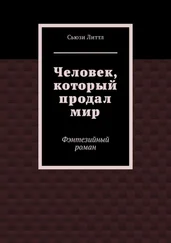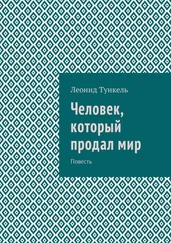Spuler, Mongolen in Iran pp. 35–38.
IAA III p. 304.
IAA III pp. 308–310; d'Ohsson, Histoire III pp. 47–74; Allsen, Culture and Conquest p. 84.
The entire subject of the Mongol attitude to Christianity is reviewed in Pelliot, 'Les Mongols et la papaute,' Revue de I'Orient chretien 23 (1923) pp. 3–30; 24 (1924) pp. 225–235; 28 (1932) pp. 3–84. The particular references to Chormaqan are at 28 (1932) pp. 236–246.
Richard Foltz, 'Ecumenical Mischief under the Mongols,' Central Asiatic Journal 43 (1999) pp. 42–69.
d'Ohsson, Histoire III pp. 75–76.
Suny, Making of the Georgian Nation pp. 39–44.
A. G. Galstyan, trans. R. Bedrosian, 'The Conquest of Armenia by the Mongol Armies,' The Armenian Review 27 (1985) pp. 4–108; Altunian, Die Mongolen pp. 35–37; Robert Bedrosian, 'Armenia during the Seljuk and Mongol periods,' in Hovannisian, Armenian People I pp. 241–271 (esp. p. 256); Dashdondog, Mongols and the Armenians p. 43.
JB II pp. 489–500; Spuler, Die Mongolen in Iran p. 34; d'Ohsson, Histoire III pp. 78–84.
JR II p. 1137.
Franke 8t Twitchett, Cambridge History p. 263. It was bad luck for another Jin envoy that this happened while he was at the Mongol court. In retaliation Ogodei ordered humiliation and a slow death instead of instant execution. The envoy had his beard cut off and was then sent to the front as one of the 'arrow fodder' unfortunates in the van of the Mongol army (d'Ohsson, Histoire II p. 19).
d'Ohsson, Histoire II pp. 16–18.
One estimate is that in the years 1230–35, if we include the simultaneous campaigns against Jalal, the Jin, Korea and the steppe Bulgars, Ogodei had forces 400,000 strong at his disposal (Martin, Rise p. 15).
d'Ohsson, Histoire II pp. 19–20.
Whiting, Military History p. 355.
d'Ohsson, Histoire II p. 20.
Vladimirtsov, Genghis pp. 112–113.
SHO p. 264; SHR p. 202.
Charles A. Peterson, 'Old Illusions and New Realities: Sung Foreign Policy, 1217–1234,' in Rossabi, China among Equals pp. 204–239 (at p. 221).
Franke, Geschichte iv pp. 286–287.
У автора — Han River ; очевидно, Ханьшуй, приток Янцзы. — Прим. пер .
JR I p. 286.
JR I p. 287.
d'Ohsson, Histoire II pp. 22–24.
Abel-Remusat, Nouveaux melanges p. 93.
d'Ohsson, Histoire II pp. 24–25.
Gabriel, Subotai p. 63.
Although scholars are usually sceptical about tales of Mongol cannibalism, the outbreak of anthropophagy by desperate men in Tolui's army in 1231–32 can hardly be gainsaid (Gregory G. Guzman, 'Reports of Mongol Cannibalism in the Thirteenth-Century Latin Sources: Oriental Fact or Western Fiction?' in Westrem, ed., Discovering New Worlds pp. 31–68). See also Rachewiltz, Commentary p. 915.
Boyle, Successors p. 35.
Boyle, Successors p. 36.
JR II pp. 1137–1138.
Boyle, Successors p. 37.
Boyle, Successors p. 38.
JR II p. 1138.
Tao, Jurchen p. 23.
d'Ohsson, Histoire II pp. 25–26.
d'Ohsson, Histoire II pp. 25–26.
Boyle, Successors p. 39.
Rachewiltz, In the Service p. 20.
Rachewiltz, In the Service p. 61.
Franke, Geschichte iv pp. 285–286.
Abel-Remusat, Nouveaux melanges p. 95.
C. Sverdrup, 'Numbers in Mongol Warfare,' Journal of Medieval Military History 8 (2010) pp. 109–117 (at p. 116).
Paul J. Smith, 'Family, Landsmann and Status-Group Affinity in Refugee Mobility Strategeies: the Mongol Invasions and the Diaspora of Sichuanese Ehtes, 1230–1300,' Harvard Journal of Asiatic Studies 52 (1992) pp. 665–708.
Peterson, 'Old Illusions,' loc. cit. p. 224; Jagchid & Symons, Peace, War and Trade pp. 134–135.
Buell, Dictionary p. 138.
This manifested itself particularly in the battles between Jin and Song in the twelfth century, when the aetiology of disease was thought to be connected with marmots (Perdue, China Marches West p. 47).
Mote, Imperial China p. 447.
SHO pp. 265–266; SHR pp. 203–205; SHC pp. 211–214.
JB I pp. 38–39, 167–168; II p. 549.
Fletcher, 'The Mongols,' p. 36; Rachewiltz, Commentary pp. 999–1001. See also JR II p. 1138; Boyle, Successors pp. 38–39, 167–168.
Gumilev, Imaginary Kingdom pp. 297–298.
JB II pp. 550–553; Boyle, Successors pp. 168–171.
Haenisch, Zum Untergang zweier Reiche pp. 7–26.
d'Ohsson Histoire, II pp. 34–35.
W Abramowski, 'Die chinesischen Annalen von Ogodei und Guyiik — Ubersetzung des 2. Kapitels des Yuan Shih,' Zentralasiatische Studien 10 (1976) pp. 117–167 (at pp. 124–130).
d'Ohsson, Histoire II p. 29.
Jixing Pan, 'On the origin of rockets,' T'oung Pao 73 (1987) pp. 2–15.
Feng Chia-Sheng, 'The Discovery and Diffusion of Gunpowder', Historical Journal 5 (1947) pp. 29–84.
G. Schlegel, 'On the Invention of Firearms and Gunpowder in China', T'oung Pao 3 (1902) pp. I–II.
RT II p. 450; Franke, Geschichte iv pp. 287–288; Paul Ё. Chevedden, 'The Invention of the Counterweight Trebuchet: A Study in Cultural Diffusion,' Dumbarton Oaks Papers 54 (2000) pp. 71–116. It appears that the counterweight trebuchet was first used methodically at a siege by the Byzantines in 1165. They were famously used by Richard the Lionheart at the siege of Acre in 1189–91. Double counterweight trebuchets were later used by Emperor Frederick II ('Stupor Mundi') and by Louis IX on crusade. It seems a fair inference that the Mongols, who totally outclassed Europeans in the warfare of 1237–42, would have used them by the early 1230s.
d'Ohsson, Histoire II p. 32.
Читать дальше
Конец ознакомительного отрывка
Купить книгу

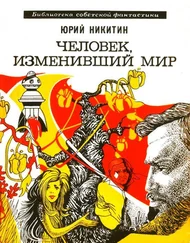

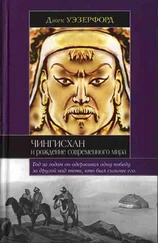
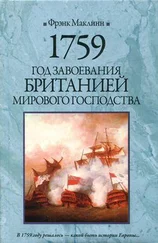

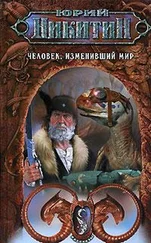
![Ксения Чепикова - Человек, научивший мир читать [История Великой информационной революции]](/books/388624/kseniya-chepikova-chelovek-nauchivshij-mir-chitat-ist-thumb.webp)
